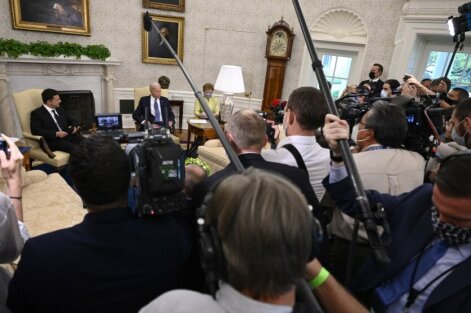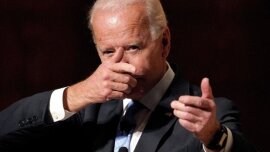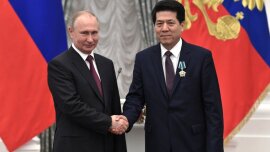Volodymyr Zelenskyy’s visit to Washington can be described in one sentence: The lack of a visible result, as paradoxical as it may sound, is also a result.
VADIM DENYSENKO
Source: press service of the President of Ukraine
Volodymyr Zelenskyy’s visit to Washington can be described in one sentence: The lack of a visible result, as paradoxical as it may sound, is also a result.
If we briefly summarize the main results of the visit, they can be reduced to three points:
1. The United States has clearly shown that the conversation is moving in an extremely pragmatic direction: the range of interests in the economy and security factors is outlined and we are offered huge possible loans for American goods (nothing new – so Europe and Japan emerged from the crisis after World War II, and Americans earned it, so I would refrain from too categorical cries of betrayal – it all depends on the ability of negotiators to place emphasis and the ability to defend their elite).
2. The United States singles out NABU and SAP as a key body. Efficiency is not important – the so-called “independence” is important, but only from the Office of the President (after all, there is nothing new here – NABU and SAP are control over elites)
3. In his introductory speech, without waiting for Zelenskyy’s invitation, Biden stressed that he wanted to come to Kyiv. Translated from diplomatic, he gave a message to the pro-American elites in our country and the establishment in the United States that he is not going to leave Ukraine and just so, will not decide to “leave Ukraine” (this, in fact, the message is aimed primarily at US elites, that Nord Stream will not be followed by further concessions to the Kremlin).
And now let’s go through all these points in more detail. You need to start talking about the results of the visit from the status of the visit: it was just a working visit. The United States has deliberately lowered the level of this visit to the lowest possible level: during such trips there are no breakthroughs and no signing of age-old documents. Therefore, from the very beginning we were shown that this is an acquaintance visit, where there will be a clear placement of dots over the “I”, which happened behind closed doors at the meeting Biden-Zelenskyy tete-a-tete (read three points about the results of the visit).
It is also necessary to dwell on the rather weak preparation of the Ukrainian side for this visit. One can, of course, talk about whether it was necessary to meet with the head of the IMF or someone else, but I would like to say something else: the project of presenting Ukrainian investment projects worth $277 billion was a failure. Presenting such things to an audience where there is no serious business representative is not just absurd, it is scaring away a potential investor. And, secondly, to present investment projects without having a specially created site, or even an open page on the Cabinet’s website – is a voice to nowhere. If we google these investment projects, we will not find any links.
Now, about the messages that the United States has given us by signing memoranda worth tens of billions of dollars. We were told in simple and accessible language: this is the money you can use to buy American goods. Then in our latitudes will begin a discussion on “this is the transformation of Ukraine into a US colony, because the added value will remain overseas, and control over the country will be concentrated in the pro-American NABU” or “how great it is that we will give energy and defense goods and we will have happiness forever. ” The truth, as always, lies in the middle and depends on a number of factors, including the skills of our negotiators.
A simple example: five new nuclear reactors for $25 billion. Do we need this contract? Definitely so. But is this contract one of the best chances for Westinghouse to avoid financial collapse? This is also true, because the company is in a financial crisis. And for each of the signed memoranda, we can find such ambivalences.
In short, we were told in Washington: you have a window of opportunity. No, you will not get anything on the layer, we will control every penny, but it will give you the opportunity to modernize certain industries at very low interest rates. We have two options: to say that we are not sold so cheaply and to continue to live as we live. Or to gather the country’s key political players, hold a sensible discussion in society and determine whether we want such modernization. In parallel, you could start to change the rules of the game to more acceptable and not so scary for the investor.
In fact, so far, in the entire history of Ukrainian-American relations, the United States has not made such an offer to us. The main question is whether we can properly assess it. Then decide what kind of loans we need (for technologies we lack) and then negotiate properly. It is a long process – at least a few years until we see some tiny first results. Or, if you translate it into the language of elections – after the 2024 elections. And this is the main obstacle today. There are simply no quick win-win solutions in this story.

























